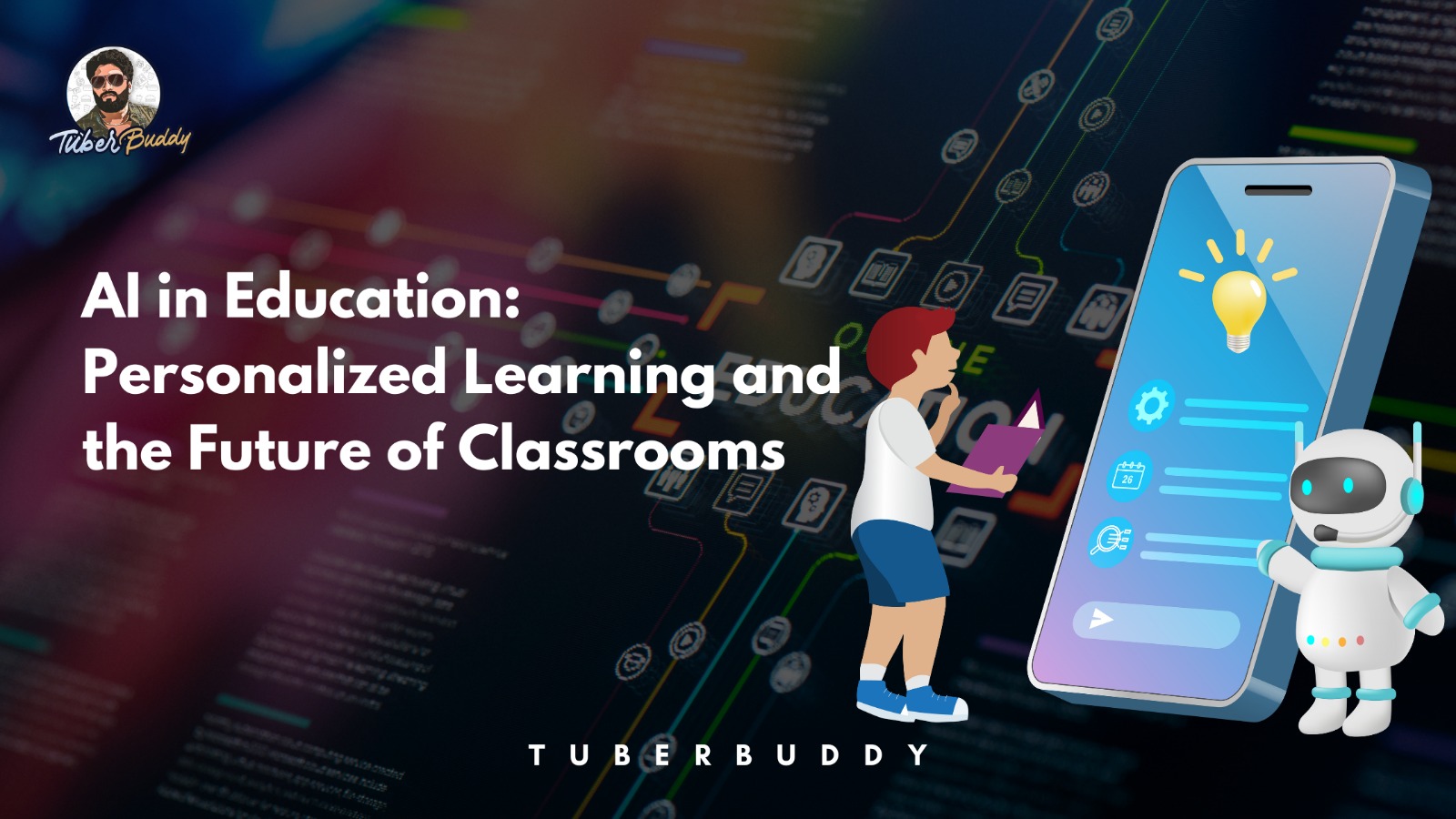AI in Education: Personalized Learning and the Future of Classrooms

Artificial Intelligence (AI) is revolutionizing various industries, and education is no exception. The integration of AI in education is reshaping how students learn, teachers instruct, and institutions operate. One of the most significant impacts of AI is in personalized learning, tailoring educational experiences to meet individual student needs.
What is Personalized Learning?
Personalized learning refers to an educational approach that aims to customize learning for each student’s strengths, needs, skills, and interests. By leveraging AI, educators can analyze data on student performance, learning preferences, and engagement levels to create tailored learning experiences. This allows for a more effective learning process, enabling students to progress at their own pace.
The Role of AI in Personalized Learning
Adaptive Learning Technologies: AI-driven platforms can adapt the curriculum based on a student’s performance. For instance, if a student struggles with a particular concept, the AI can provide additional resources, exercises, or alternate explanations to help them grasp the material. This adaptability ensures that students receive the support they need, when they need it.
Data Analysis and Insights: AI can process vast amounts of data to identify patterns in student learning. Educators can gain insights into which teaching methods work best for different learners, allowing them to refine their instructional strategies. This data-driven approach leads to improved student outcomes and a more engaging classroom environment.
Enhanced Engagement: AI can help create interactive learning experiences. For example, virtual reality (VR) and augmented reality (AR) applications can immerse students in a simulated environment, enhancing their understanding of complex subjects. Such innovative technologies keep students motivated and engaged, making learning enjoyable.
Tutoring and Support: AI-powered chatbots and virtual tutors can provide instant support to students outside of regular classroom hours. These tools can answer questions, offer explanations, and guide students through challenging material, fostering a continuous learning experience.
Administrative Efficiency: AI can streamline administrative tasks, allowing teachers to focus more on instruction. By automating grading, scheduling, and resource allocation, AI helps educators save time and reduce workload, leading to a more effective teaching environment.
The Future of Classrooms with AI
As AI continues to advance, the future of classrooms will likely feature a blend of traditional and technology-driven approaches. Here are a few potential developments:
Hybrid Learning Environments: Classrooms may evolve into hybrid models that combine in-person and online learning. AI can facilitate this transition by personalizing content for students in both settings, ensuring a seamless learning experience.
Continuous Assessment and Feedback: AI will enable real-time assessment of student performance, providing immediate feedback. This continuous evaluation will help educators identify areas where students need additional support, fostering a proactive approach to learning.
Global Learning Communities: AI can connect students from different parts of the world, allowing for collaborative projects and cultural exchange. This exposure to diverse perspectives enriches the learning experience and prepares students for a globalized world.
Skill Development for Future Careers: As the job market evolves, AI can help identify the skills that will be in demand. Educational institutions can leverage this information to design curricula that equip students with relevant skills, ensuring they are prepared for the future workforce.
Conclusion
The integration of AI in education is transforming how we approach learning and teaching. Personalized learning powered by AI has the potential to enhance student engagement, improve outcomes, and create a more inclusive educational environment. As we embrace these technologies, it is essential to remain focused on the human element of education, ensuring that AI serves as a tool to empower both students and educators.
For more insights and resources related to education and learning, check out Tuber Buddy. Explore various topics on travel, food, health, and personal development to enrich your knowledge and experiences!
